Imagine a world without buzzing bees, fluttering butterflies, or even a tiny ant crawling on the ground. For billions of years, that’s exactly what Earth was like! Life was mostly in the oceans, and the land was a quiet, empty place. But then, a revolutionary change happened. Tiny creatures, the ancestors of today’s bugs, took their first steps onto solid ground. This incredible story of the first insects on Earth is about how these small but mighty pioneers transformed our planet, paving the way for all land animals and plants to thrive. Let’s explore their amazing journey!
Don’t Miss This!
After reading, challenge yourself with our interactive quiz at the end. Click here to take the Quiz
Table of Contents
Life Before Insects
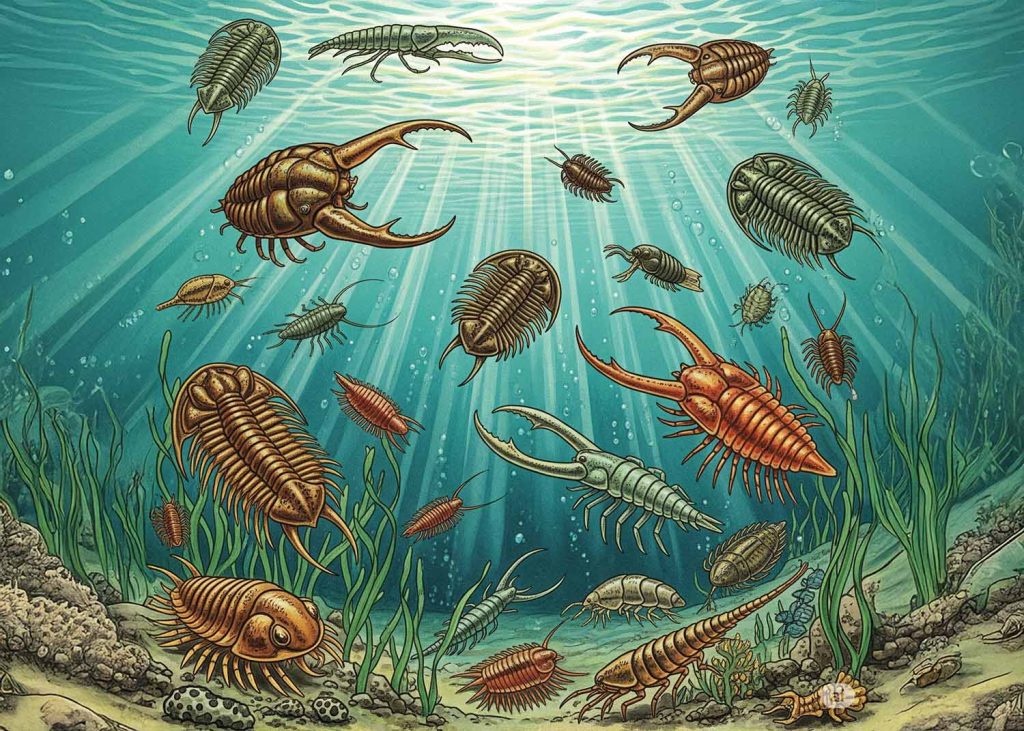
Before insects, the oceans were home to many types of arthropods, like the ancient trilobites.
Before the first insects on Earth appeared, the oceans were already full of amazing creatures. Among them were arthropods, a group of animals with exoskeletons (hard outer shells) and jointed legs. Think of ancient crabs, lobsters, and the famous trilobites. These creatures were masters of the sea, but the land remained largely untouched by animal life.
The land was a harsh place. It was dry, exposed to strong sunlight, and lacked the support of water. For any creature to move onto land, it needed special adaptations to survive these tough conditions. Plants had already started to colonize land, creating new environments and food sources, but animals were still mostly aquatic.
The Big Move
Early insects faced many challenges when moving from their watery homes to the dry land.
For the ancestors of insects, moving from water to land was a huge challenge. They had to overcome several big problems:
- Drying Out: Water animals are always wet. On land, they could quickly lose water from their bodies and dry up.
- Breathing Air: Gills work in water, but not in air. They needed a new way to get oxygen.
- Gravity: Water supports bodies. On land, they needed strong legs and exoskeletons to stand up.
- Reproduction: Many aquatic animals release their eggs and sperm into the water. On land, they needed new ways to reproduce without water.
- Temperature Swings: Land temperatures change much more quickly than water temperatures.
These were serious hurdles. But the creatures that would become the first insects on Earth found clever ways to solve them.
Fun Fact: The very first land animals were likely not insects, but their close relatives, like millipedes and centipedes. These creatures were already adapted to crawling and living in damp soil, making the transition to land a bit easier.
Key Adaptations for Terrestrial Life
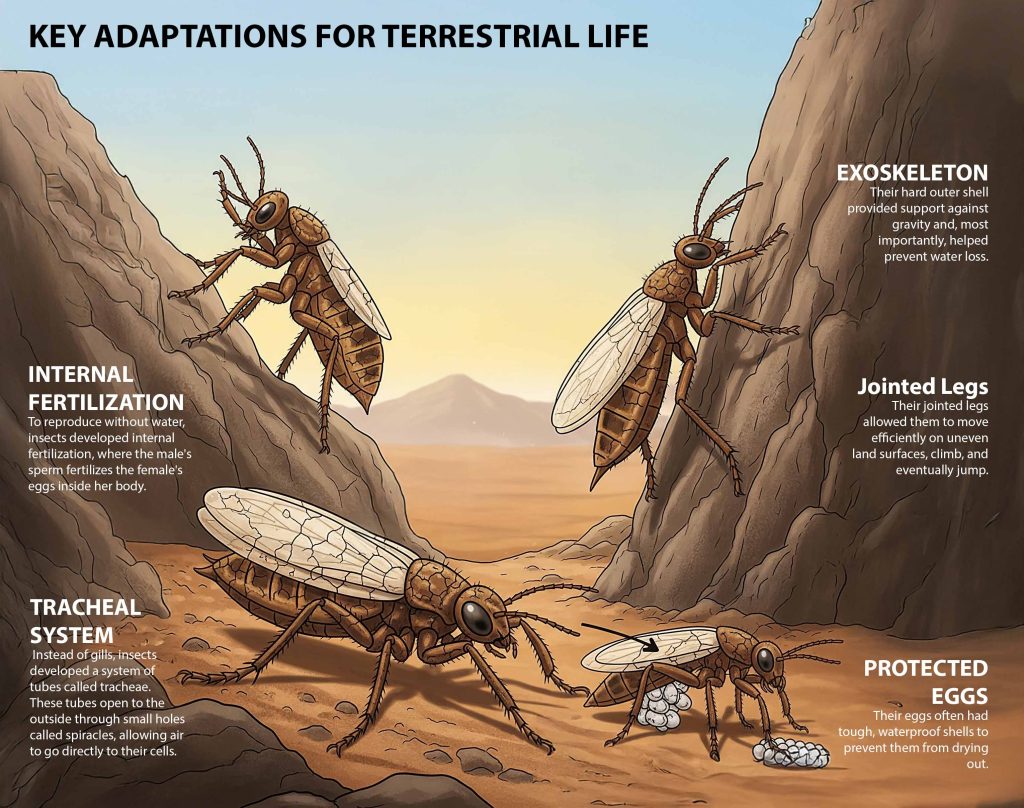
A hard exoskeleton, special breathing tubes, and strong legs were vital for insects to survive on land.
The success of the first insects on Earth came down to some amazing adaptations:
- Exoskeleton: Their hard outer shell provided support against gravity and, most importantly, helped prevent water loss. It was like wearing a suit of armor that also kept them from drying out.
- Tracheal System: Instead of gills, insects developed a system of tubes called tracheae. These tubes open to the outside through small holes called spiracles, allowing air to go directly to their cells. This was a very efficient way to breathe air.
- Jointed Legs: Their jointed legs allowed them to move efficiently on uneven land surfaces, climb, and eventually jump.
- Internal Fertilization: To reproduce without water, insects developed internal fertilization, where the male’s sperm fertilizes the female’s eggs inside her body.
- Protected Eggs: Their eggs often had tough, waterproof shells to prevent them from drying out.
These adaptations allowed them to thrive in environments where other animals couldn’t yet survive.
The Earliest Insects and Their Fossils
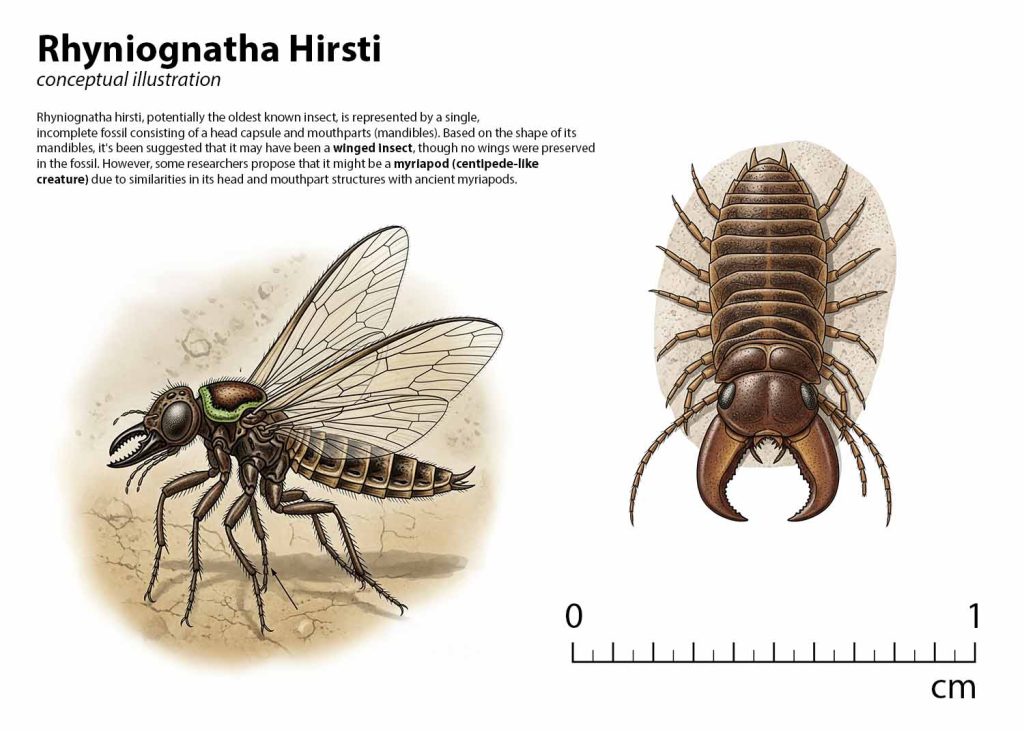
Fossils like Rhyniognatha hirsti give us clues about the very first insects.
The oldest known fossil that is clearly an insect is called Rhyniognatha hirsti. It was found in Scotland and is about 400 million years old. This tiny creature was only a few millimeters long. It had strong jaws, suggesting it ate plants. Its discovery tells us that insects were among the very first animals to truly conquer the land.
These early insects were wingless. Wings, a feature that makes insects so successful today, evolved later. The appearance of the first insects on Earth marked a major turning point. They were able to exploit new food sources (plants) and new habitats that were unavailable to aquatic creatures.
Fun Fact: For a long time, the oldest known insect was a wingless creature called a bristletail. But the discovery of Rhyniognatha pushed back the origin of insects by millions of years!
The Impact of Insects on Earth
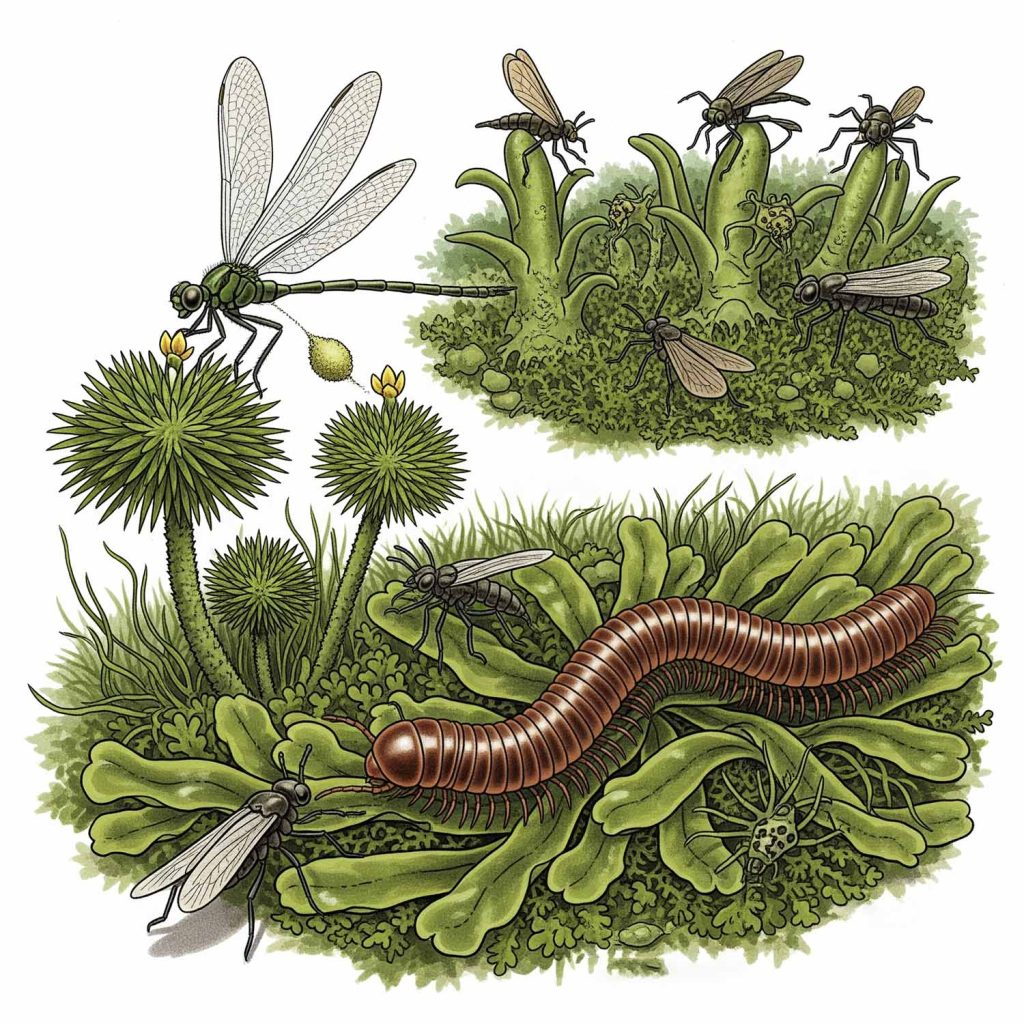
Insects played a vital role in shaping early land ecosystems, from helping plants to becoming a food source.
The arrival of the first insects on Earth had a huge impact on the planet’s ecosystems. They became the first major group of land animals. Their ability to eat plants meant they formed a crucial link in the food chain, turning plant energy into animal energy. This paved the way for larger land animals, like amphibians and reptiles, to evolve and thrive.
Insects also played a role in breaking down dead plant matter, helping to form soil. Later, with the evolution of wings, they would become vital for pollinating plants, leading to the incredible diversity of flowering plants we see today. Their small size belied their enormous influence on the planet.
Fun Fact: The Carboniferous Period, which followed the Devonian, is sometimes called the “Age of Giant Insects.” With high oxygen levels, some dragonflies grew to have wingspans as wide as a modern eagle!
Tiny Pioneers
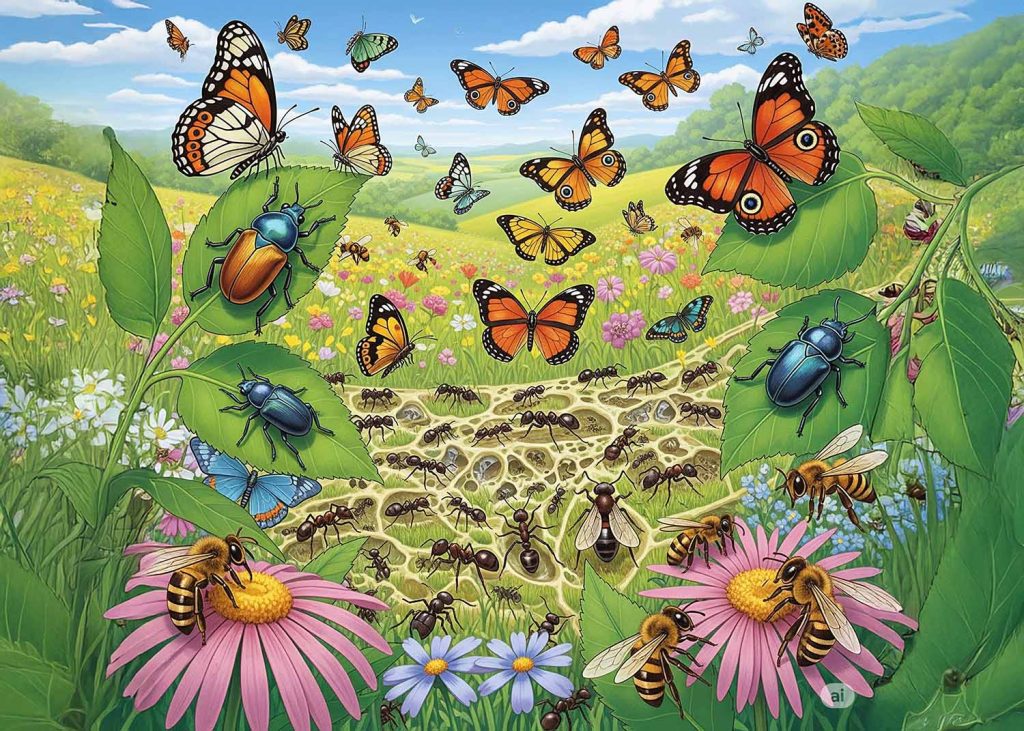
From ancient pioneers to today’s countless species, insects are a testament to evolutionary success.
Today, insects are the most diverse group of animals on Earth. There are millions of different species, and they live in almost every habitat imaginable. This incredible success story began hundreds of millions of years ago with the first insects on Earth. Their journey from tiny aquatic creatures to dominant land dwellers is a powerful reminder of evolution’s ability to create new forms of life.
Every time you see a bug, remember its ancient ancestors. They were the tiny conquerors who helped make our green and lively planet possible. To learn more about how other life forms made the leap to land, check out our article Earliest Land Plants
First Insects on Earth Quiz
Test your knowledge about Earth’s tiny land conquerors!
Notes
1️⃣ Ancient Arthropods Before Insects:
Long before insects evolved, the oceans teemed with ancient arthropods like trilobites, eurypterids (sea scorpions), and primitive crustaceans. These early exoskeleton-bearing creatures were the dominant life forms for hundreds of millions of years but never left the water until some of their relatives ventured onto land. Britannica – Arthropod Origins
2️⃣ First Land Animals:
The very first land animals weren’t insects but their cousins — myriapods like millipedes and centipedes. Fossils from Scotland show these tiny, multi-legged pioneers likely crawled onto land about 425 million years ago, feeding on decaying plant matter and helping to form early soils.
Jane Gray et. al. – Oldest Land Animal
3️⃣ Key Adaptations for Land:
To thrive on dry land, early insects and their relatives evolved critical adaptations: a tough exoskeleton to prevent water loss, a system of tiny breathing tubes (tracheae) connected to spiracles (openings) for air exchange, and strong jointed legs to move on solid ground. These features helped them conquer environments where few other animals could survive.
4️⃣ Earliest Insect Fossils:
The oldest known insect fossil, Rhyniognatha hirsti, dates back about 400 million years to the Early Devonian. It was tiny, with strong jaws that hint it might have fed on early plants or other arthropods. While scientists debate its exact placement, it shows insects were among the first true land animals to diversify widely.
National Library of medicine – Rhyniognatha
5️⃣ Impact on Early Ecosystems:
Insects were game changers for life on land. They became the first widespread group of small land animals, feeding on plants and decaying matter, forming new food chains, and enriching soils. Later, the evolution of wings and complex life cycles made them key pollinators and decomposers, roles they still play today.
Stanford – When Insects First Took Flight
6️⃣ The Carboniferous ‘Age of Giant Insects’:
During the Carboniferous Period (around 359–299 million years ago), Earth’s oxygen levels were much higher than today. This allowed some insects, like the giant dragonfly Meganeura, to grow wingspans wider than an eagle’s. This era earned its nickname as the ‘Age of Giant Insects.’

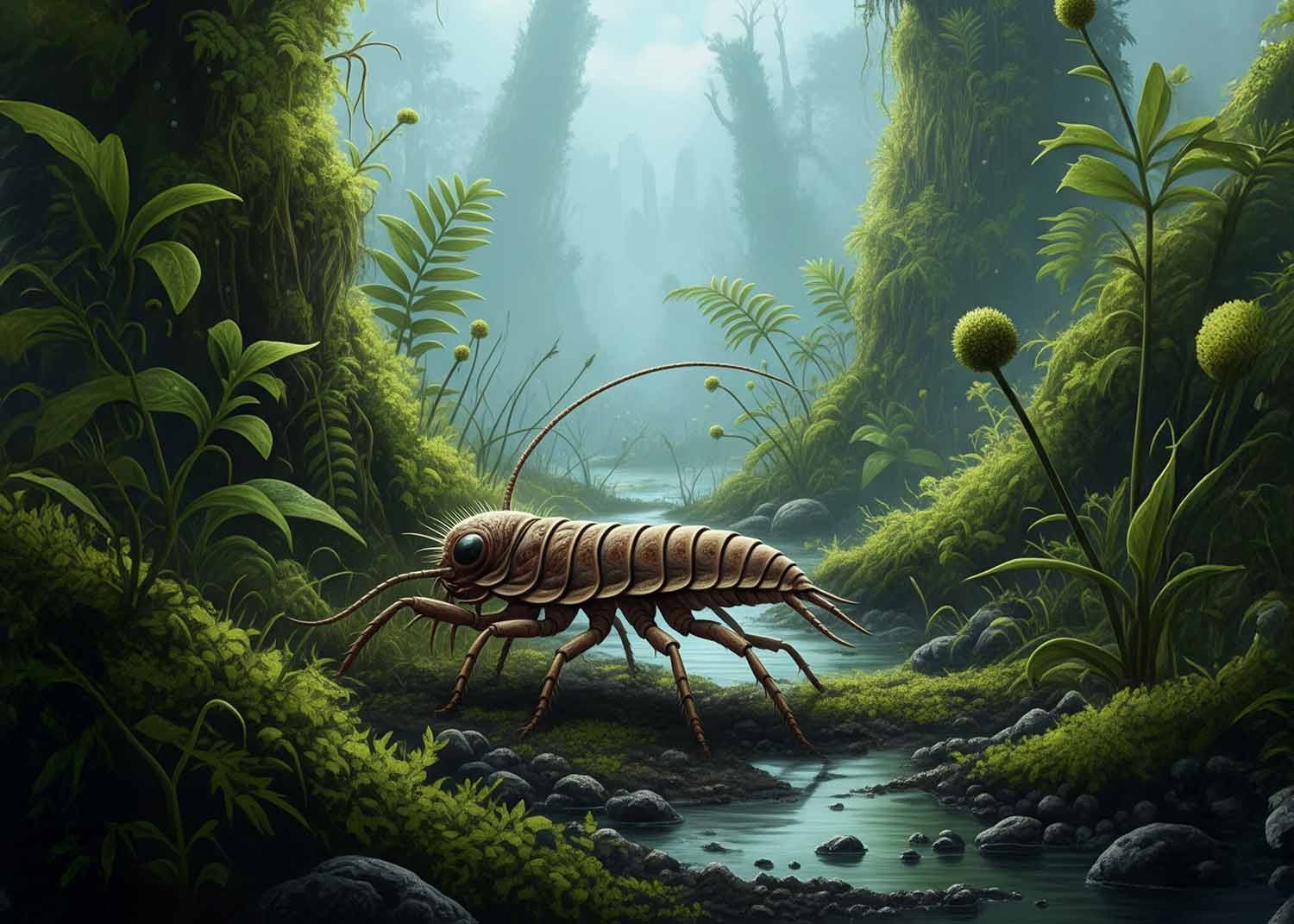
Leave a Reply